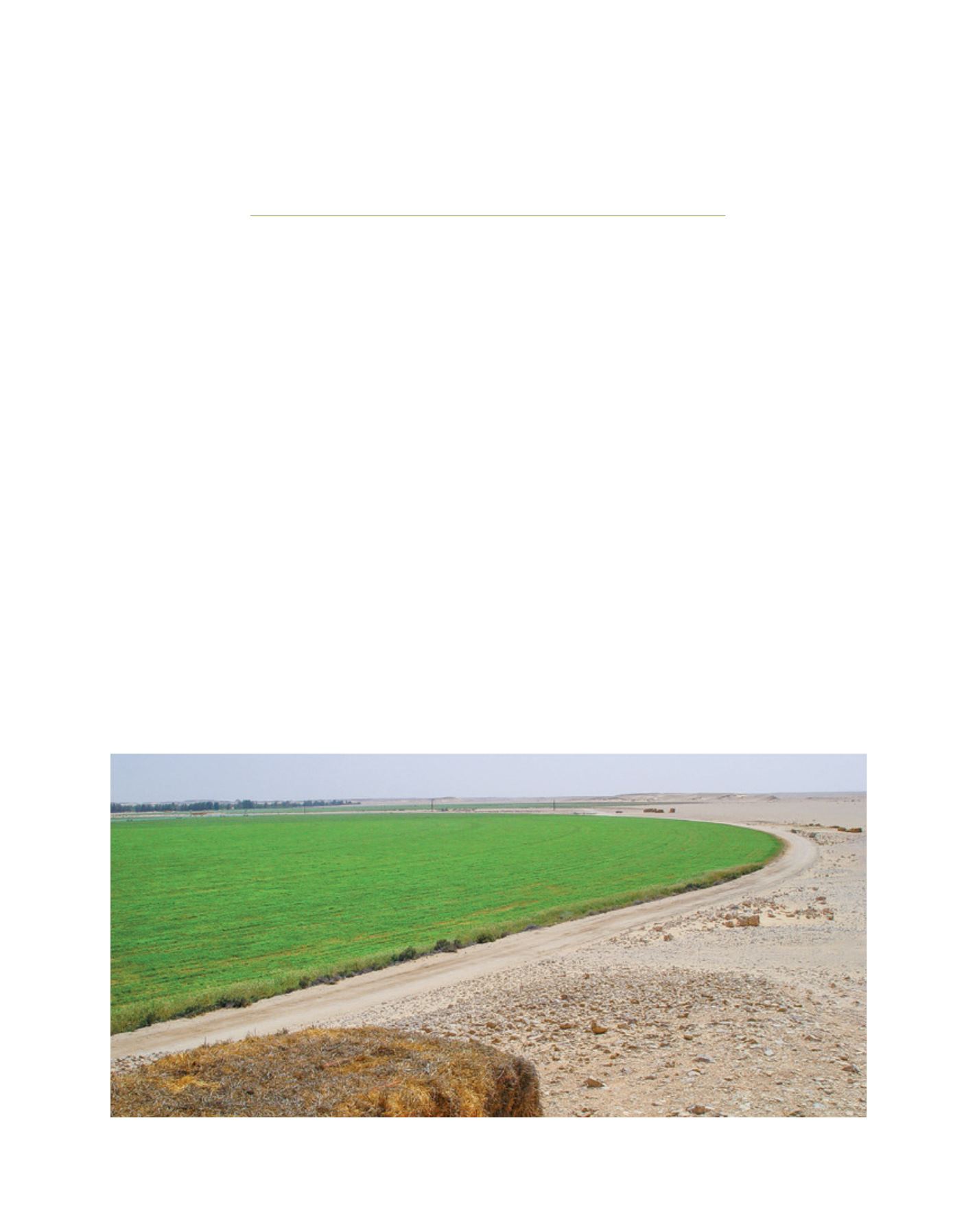

[
] 146
Biosaline agriculture as an approach
for combating desertification
Dr Abdullah Dakheel, Dr Rao Nanduri and Dr Richard Soppe, International Center for Biosaline Agriculture, Dubai
D
esertification has several causes, including popu-
lation pressure, changing climatic conditions,
economic, political and social conditions, and lack
of access to science and technology.
The Millennium Ecosystem Assessment lists overgrazing as one
aspect of the desertification cycle, when land and water do not
provide enough resources for sustainable grazing. Salinization
of soils is another chain in the process towards desertifica-
tion. Desertification usually results in more poverty which
in turn strengthens the conditions leading to desertification.
Rehabilitation of desert systems requires the adoption of multi-
ple strategies including the rehabilitation of natural degraded
ecosystems and the use of the limited water resources in agri-
culture production, afforestation and aquaculture systems in
certain cases. However, water resources in deserts are in most
cases limited to groundwater of ancient origin or shallow aqui-
fers that mostly have became salinized due to overutilization
and depletion. In coastal and subcoastal deserts seawater and
highly salinized groundwater resources exist in large quantities;
however their use in rehabilitation requires the use of special
agroecosystems that can tolerate such high levels of salinity.
An approach to break this cycle is through the application
of biosaline agriculture at different locations in the land-
scape. More salt-tolerant and drought-tolerant plants can be
introduced, allowing the use of marginal water resources to
increase plant production for foraging or fodder, thus reduc-
ing the risk of overgrazing. Higher-value salt-tolerant plants
and trees can be introduced to provide a source of income
to local populations. In addition to introducing landscape
management, socioeconomic and (implementation of) policy
decisions are needed. The introduction of managed forage
land under saline conditions, for example, should not result
in an increase of the grazing population larger than the carry-
ing capacity of the managed lands.
Several aspects need to be considered when biosaline agri-
culture is introduced. Introducing new genetic resources (new
genotypes or more salt-tolerant species) requires access to
seeds, or introducing nurseries, as well as an assessment of
crop diversity and management to maintain the local diversity
(prevent invasive species to compete out the local genotypes
and varieties, for example as is the case with wild melon in
Australia). Maintaining the local biodiversity ensures an ecosys-
tem that is adaptable to changing environmental conditions.
Image: ICBA
Rehabilitation of desert areas with salt-tolerant grasses (Oman)
L
iving
L
and
















